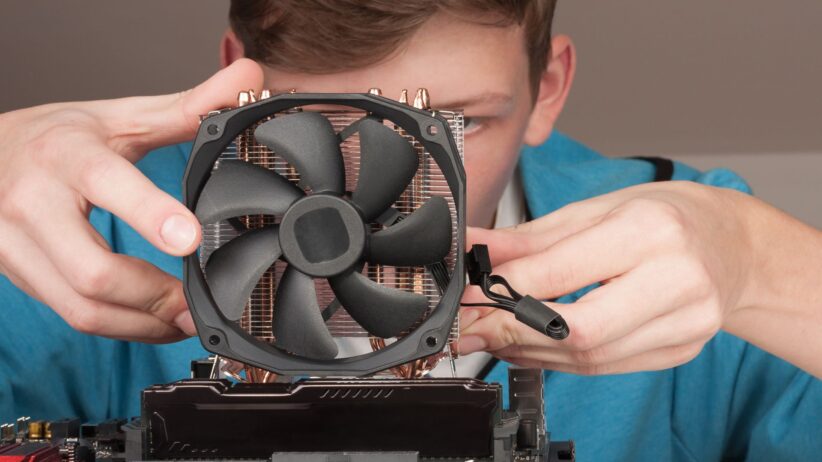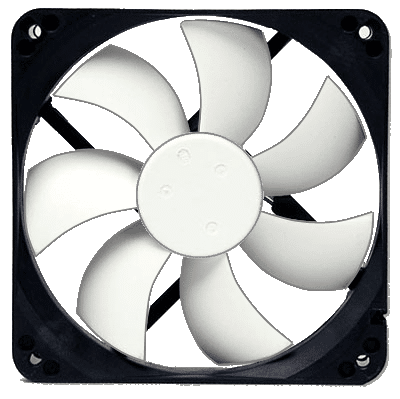If you have dealt with technology and you know your way around it, chances are that you’d know and understand the importance of a good-quality CPU fan. The ones that are integrated into your CPU is already performing at their max and instead of changing them, you can enhance the overall fan speed by improving the functionalities of these specific hardware part. But, how do you do that?
Keep in mind that any kind of dysfunctionality to the CPU fan will eventually affect the overall performance of the device. This means that you are going to experience delayed performance and other issues that many individuals often tend to struggle with. The fans are the parts that prevent the device from overheating. So, if they aren’t functioning to their best, you are going to end up witnessing a delayed performance.
Don’t worry though because we have some easy ways that you can try out to increase the CPU fan speed without BIOS?
Is it safe to change CPU fan speed without BIOS?
Yes, you can change the CPU fan speed without BIOS and the process is completely safe. The only thing is that you need to master how you change it. There is a range of dedicated software programs and solutions that effectively help in reducing the risks of delayed performance by improving the overall fan speed.

The reasons behind a lagging fan speed in the CPU can be diverse. It could be due to the clogged fan because of the accumulated dust and dirt or it could be for some other reasons too. If you don’t want to go inside the device and fix it or replace the entire fan, some other effective methods can help you with that.
How to change CPU fan speed without BIOS?
The only and possibly the most important part of changing the fan speed in the CPU without BIOS is by installing a few different types of software that are programmed to control the fan speed. Here’s what you can do:
1. Install a fan speed controlling software
The first step to fixing the poor fan speed and quality is by downloading and then installing fan speed controlling software. The process is rather simple. The software is programmed to detect any sudden rise in the device’s or CPU’s temperature and then increase the fan speed to effectively help out with the issue.
The software functions by increasing the fan’s speed when the temperature rises and then decreasing the fan speed in the CPU when the temperature comes back to normal. However, there are not one but multiple types of similar software available. You need to be mindful about choosing the right one.
2. Start with SpeedFan
When talking about CPU fan speed controlling software, the very first option in the list is SpeedFan. It is touted across the Internet as one of the best and this is how you use it:

- The best thing about this software is that its user friendly and most of all, extremely easy to operate.
- Go to the official website of the software and then download the file to your system.
- If you are having issues with the software, the best way to get around it is by using the automatic file speed option. Although it does reduce the efficiency, you aren’t going to regret using this at all.
- Once you are on the main page of the software, navigate to the speed tab after clicking down on the configuration button and then set the maximum and minimum RPM for the CPU fans. This allows your device to work efficiently and mould its functions surrounding the process.
- Once you have customized and configured the settings, you can then save the changes.
3. Open Up the hardware monitor
While we started with the easy way out that is usable by everyone, the next thing that we need to do is look out for the hardware monitor. We’d recommend that you leave this to a professional if you aren’t good with this tech stuff.
Even this one is popular software with amazing results and even better management of the fan’s speed in the long run. Here’s what you need to do:
- The software is programmed to control the monitoring hardware chips of the latest Windows version.
- The primary function of this software is to directly detect the sudden peaks and falls in the temperature of the hardware in the system and then adjust the fan speed to ensure the maximum cooling result.
- If you are an average computer user who uses Office tools and general browsing, this isn’t required for you.
4. NoteBook Fan Control
Last on the list is NoteBook Fan Control, which features a simple and minimalistic UI for easier understanding. Once you install the app from the official platform, you can then find the same on the taskbar and launch it directly from there.
The software has a simple slider function that controls the fan speed and ensures superior cooling without any complications.
FAQs
How to change CPU fan speed?
You can directly go to your BIOS settings to change the CPU fan speed directly from there. It has a separate “Fan Speed Control” that you can customize.
What is the ideal RPM for CPU fan speed?
The ideal RPM for your CPU fan speed should be at 70% and not 100% because then it reduces the efficiency over time.
Is HWMonitor safe software?
Yes, it is safe software that can detect a temperature rise and adjust the fan speed by that. The process is pretty simple.
Conclusion
If you are worried about the consistently rising CPU temperature and noticing it affecting the device’s performance, we hope this article clears up some doubt. Keep in mind that using software is likely your only way if you won’t change the settings from the BIOS menu. So, make sure you download and install and premium quality software that delivers optimum results without any complications.
Contents
